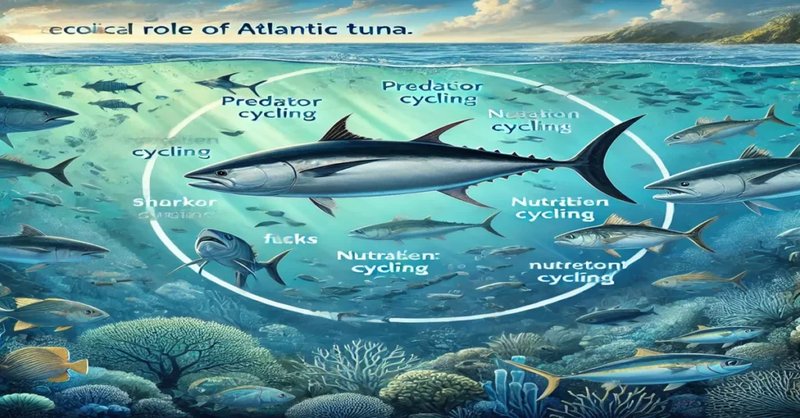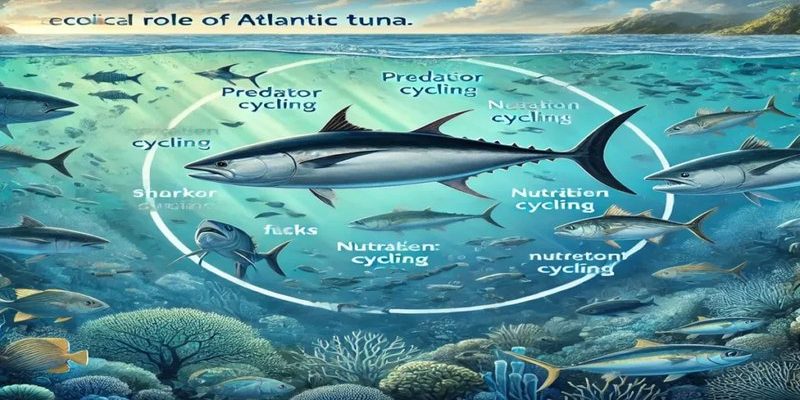
You might be wondering why we should care about tuna. After all, they’re just fish, right? Not quite. Tuna are key players in the ocean’s web of life. They help regulate populations of other marine creatures, ensuring that no single species becomes too dominant. Think of them as the mediators of the sea, keeping everything in check. Plus, they’re a crucial food source for larger predators. So, let’s explore how tuna influence marine ecosystems, their importance to biodiversity, and what happens when we start to lose them.
Understanding Tuna Species
There are several species of tuna, each with unique characteristics and habitats. The most well-known are bluefin, yellowfin, and albacore. Each variety of tuna thrives in different ocean zones, adapting their behaviors to survive in diverse environments. For instance, bluefin tuna are often found in colder waters, while yellowfin prefer warmer regions.
– Bluefin Tuna: These are the largest and most sought-after, especially in sushi culture. They can weigh up to 1,500 pounds! Their size and strength make them top predators in their environment.
– Yellowfin Tuna: Known for their speed and agility, yellowfin tuna are a favorite among sport fishers. They are often found in schools, which helps them evade predators.
– Albacore Tuna: With a milder flavor, albacore is commonly canned, making it a staple in many households.
Their presence across different ocean regions makes them crucial for biodiversity. Each species has its own role in maintaining the health of marine ecosystems.
Predator and Prey Dynamics
Tuna are apex predators, meaning they sit at the top of the food chain. Their primary role is to keep other fish populations in check. By preying on smaller fish like sardines and mackerel, tuna help prevent overpopulation of these species. This balance is essential for maintaining a healthy marine ecosystem.
Here’s the thing: when tuna populations decline, it creates a domino effect. Smaller fish can overpopulate, leading to overgrazing of plankton and other sea organisms. This shift not only affects the fish but also impacts the entire food chain, altering the marine habitat.
Moreover, tuna are also prey for larger animals, like sharks and orcas. This dynamic relationship shows how interconnected marine life can be. By being both predator and prey, tuna contribute to a rich, complex ecosystem.
The Importance of Tuna to Human Economies
Tuna are not just important to marine ecosystems; they also hold great economic value. The global tuna industry is worth billions of dollars. Fishermen rely on tuna for their livelihoods, and many coastal communities depend on these fish for food and economic stability.
Canned tuna is a staple in many diets around the world. It’s affordable, rich in protein, and versatile, making it a popular choice for meals. Sustainable fishing practices for tuna are increasingly important to ensure that we don’t overfish these vital species.
However, overfishing poses a significant threat to tuna populations. It’s been estimated that some tuna species are nearing extinction. By supporting sustainable practices and conscious consumption, we can help protect tuna and ensure they remain a part of our oceans for generations to come.
Impact of Overfishing on Marine Ecosystems
Overfishing is a pressing issue that doesn’t only affect tuna but the entire marine ecosystem. When tuna are overfished, the ripple effects can be catastrophic. Populations of smaller fish may explode, leading to competition for resources like plankton, which are essential for many marine creatures.
This can cause a trickle-down effect, affecting everything from coral reefs to seabirds. For instance, as smaller fish overpopulate due to the lack of predators, they can deplete resources, making it difficult for other species to survive. This imbalance can lead to habitat degradation and the collapse of local fisheries.
Sustainable fishing practices are crucial for combating this issue. By promoting responsible fishing methods, we can help ensure that tuna populations remain stable, allowing them to fulfill their role in the ecosystem.
Biodiversity and Tuna Conservation
Tuna are a critical part of marine biodiversity. Their role as both predator and prey supports a wide variety of marine life. When we protect tuna, we also protect countless other species that rely on a balanced ecosystem.
Conservation efforts are essential to maintain tuna populations and promote biodiversity. Organizations worldwide are working on initiatives to prevent overfishing and support sustainable fishing practices. This includes implementing fishing quotas and promoting alternatives like aquaculture.
Engaging with local communities to raise awareness about the importance of tuna can also make a difference. Whether it’s through educational programs or community fishing initiatives, understanding the role of tuna can inspire collective action towards conservation.
How to Support Tuna Conservation Efforts
Now that we know how vital tuna are to our oceans, you might be wondering how you can help. Here are a few steps you can take to support tuna conservation:
– Choose Sustainable Seafood: Look for certifications like the Marine Stewardship Council (MSC) label when buying seafood. This ensures you’re supporting sustainable fishing practices.
– Educate Yourself and Others: Knowledge is power! Share what you’ve learned about tuna and their role in the ecosystem with family and friends.
– Support Conservation Organizations: Many groups focus on protecting tuna populations and their habitats. Financial contributions, even small ones, can help fund their essential work.
By making informed choices, you can be a part of the solution and help protect tuna and, in turn, the rich diversity of marine life that they support.
The Future of Tuna and Our Oceans
The future of tuna populations and our oceans is intertwined. As we face climate change and continued pressures on marine ecosystems, it’s crucial to be proactive about protecting these vital fish. Advocating for sustainable practices, supporting conservation efforts, and educating ourselves and others can lead to positive change.
Let’s remember that every action counts. By safeguarding tuna, we’re not just protecting a fish; we’re preserving the delicate balance of our oceans. As stewards of the planet, we share a responsibility to ensure that future generations can enjoy the beauty and biodiversity of marine life.
In conclusion, tuna are remarkable and essential components of marine ecosystems. Their roles as predators and prey keep the ocean’s food web in balance, while their economic significance impacts millions of lives. Together, we can help support tuna populations and ensure our oceans thrive. So next time you see tuna on your plate or in a grocery store, remember their incredible journey and the role they play in our world.

